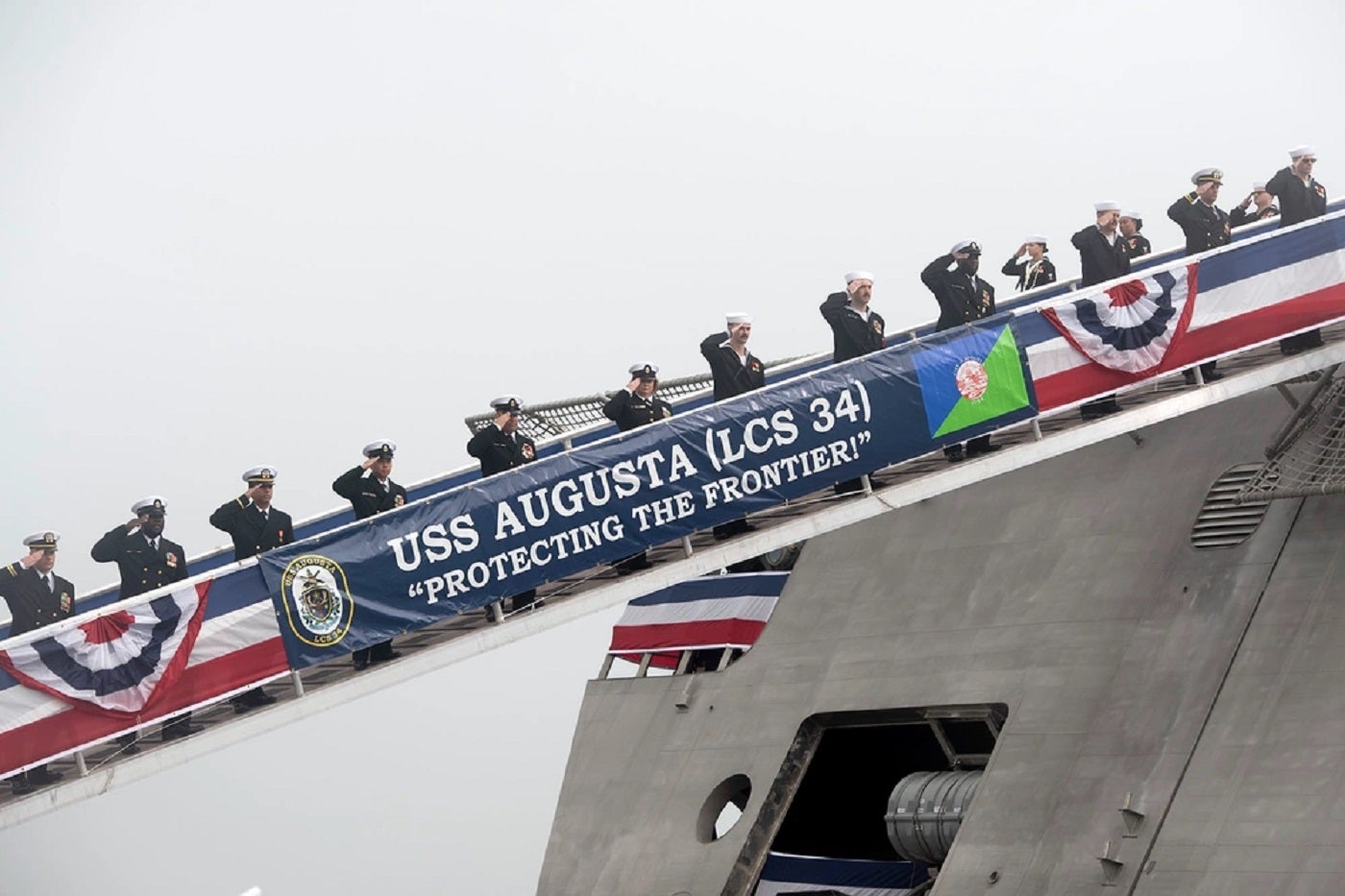
The United States Navy has commissioned its newest littoral combat ship, the USS Augusta (LCS 34), during a ceremonious event in Eastport, Maine.
This commissioning marks an addition to the Navy’s fleet and recognises Maine’s contributions to the US’s maritime legacy.
On Saturday morning 30 September, in Eastport, Maine, the US Navy commissioned the USS Augusta (LCS 34), the 17th independence-variant littoral combat ship (LCS) and the 33rd in its class. The US Navy received the USS Augusta (LCS 34) in May.
The name of this naval warship is after Augusta, Maine. The selection of Augusta as the ship’s namesake acknowledges Maine’s maritime heritage and its role in the nation’s maritime industry.
The littoral combat ship (LCS) class, consisting of two variants, the Freedom and the Independence, plays a role in modern naval operations. USS Augusta (LCS 34) is part of the Independence variant, and it was designed and constructed by Austal USA in Mobile, Alabama.
Vice Adm. John Fuller, Naval Inspector General, highlighted that the USS Augusta and her crew will play a role in naval operations, “The USS Augusta and her crew will play an important role in defending our nation and enabling global maritime freedom and commerce. She will be integrated into operations that provide presence and support both sea control and power projection, which are at the core of the Navy’s mission.”
These optimally manned, mission-tailored surface combatants are known for their speed and versatility, capable of operating in near-shore and open-ocean environments. They play a role in addressing 21st-century coastal threats and work with joint, combined, manned, and unmanned teams to support forward presence, maritime security, sea control, and deterrence missions worldwide.
As the USS Augusta (LCS 34) prepares to join the Navy’s fleet, this commissioning ceremony highlights the role of littoral combat ships in securing the nation’s maritime interests in the 21st century.
The week leading up to the commissioning ceremony saw the USS Augusta (LCS 34) crew engaging with their ship’s sponsor, Chief Justice Leigh Saufley, and actively participating in community relations events in Augusta, Maine.
During the ceremony, The Honorable Jared Golden, US Representative for Maine’s 2nd District, conveyed his well-wishes to the crew of the USS Augusta.
Various Littoral Combat Ships have been christened within the last year, including the USS Augusta in December 2022. These include the USS Marinette (LCS 25), Kingsville, and Cleveland (LCS 31).
With the US naval fleet falling below 300 total ships, in December 2016, the US Navy released a force-structure goal that calls for the deployment of a fleet of 355 ships of various categories and involves spending $25bn a year till 2049 to regain its superiority, according to GlobalData’s “US Defense Market 2022-2027” report.
However, the US Navy had sought to remove a significant portion of its LCS fleet in recent years as difficulties with maintenance, external concerns about the type’s survivability in contested maritime environments, and a lack of available modular mission modules hindered its development and service use.








